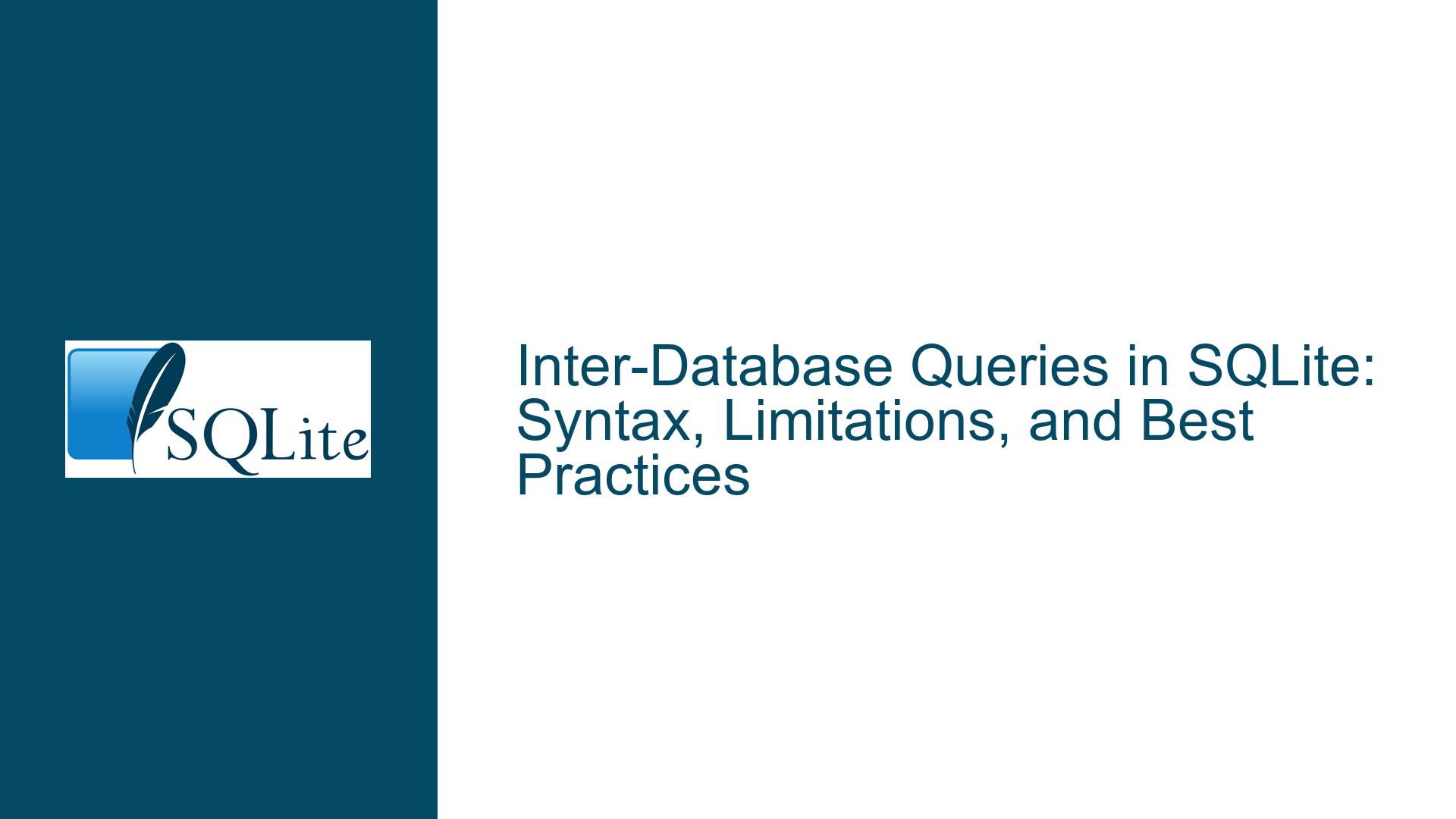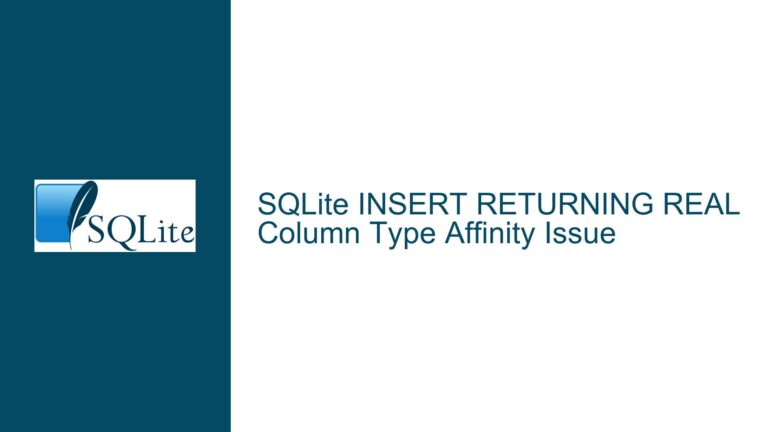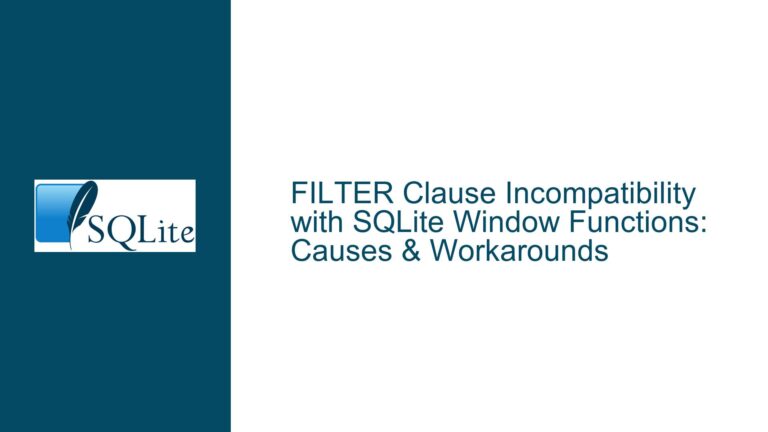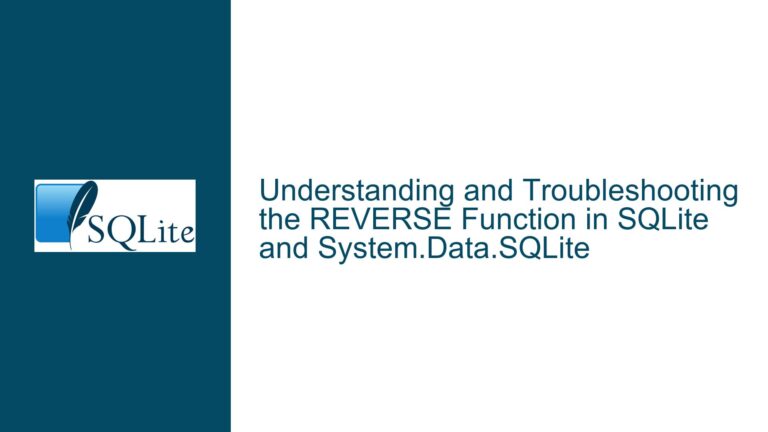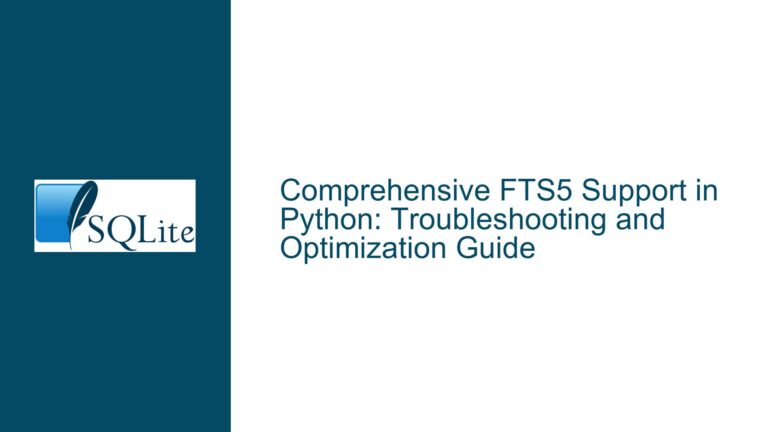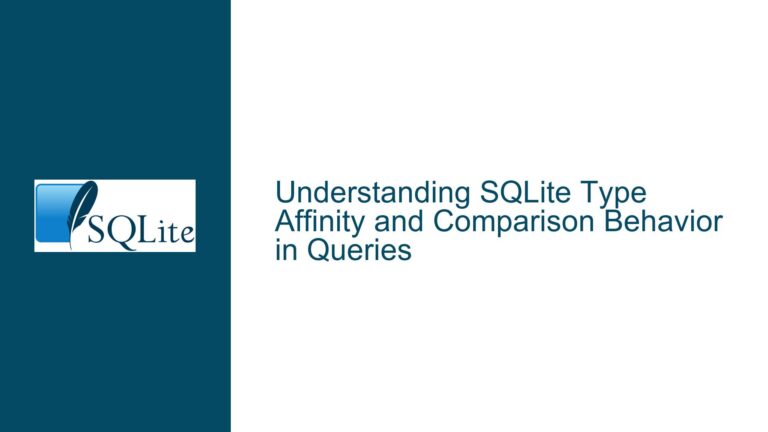Inter-Database Queries in SQLite: Syntax, Limitations, and Best Practices
SQLite Inter-Database Query Syntax and Schema Identifiers
SQLite provides a powerful feature that allows users to attach multiple databases to a single connection and perform queries across them. This capability is particularly useful when working with distributed data or when you need to combine information from different sources. However, understanding the syntax and the underlying schema identifiers is crucial to executing these queries correctly.
When you open a connection to a SQLite database using the sqlite3_open* series of API calls or the sqlite3 CLI command, the database you connect to is automatically assigned the schema identifier main. This is a fixed identifier and cannot be changed. Any additional databases you attach to this connection must be given a unique schema identifier, which you can specify using the ATTACH DATABASE command. For example, if you have a database file named att.db, you can attach it to your current connection with the following command:
ATTACH 'att.db' AS att;
Once attached, you can reference tables in att.db using the att schema identifier. For instance, if att.db contains a table named table2, you can query it as att.table2. The main schema identifier is used for the originally connected database, so a table named table1 in conn.db would be referenced as main.table1.
The ability to perform inter-database queries relies on this schema identifier system. For example, to join data from table1 in conn.db and table2 in att.db, you would use the following SQL syntax:
SELECT main.table1.field1, att.table2.field2
FROM main.table1, att.table2
WHERE main.table1.id = att.table2.id;
This query retrieves field1 from table1 in the main database and field2 from table2 in the att database, joining the two tables on their id fields. The schema identifiers (main and att) ensure that SQLite can correctly resolve the table references across the two databases.
It’s important to note that the schema identifiers main and temp are reserved. The main schema always refers to the originally connected database, while the temp schema refers to the temporary database used for transient objects like temporary tables. Attempting to use these reserved identifiers for attached databases will result in an error.
Limitations of Cross-Database Operations in SQLite
While SQLite’s ability to attach multiple databases and perform inter-database queries is powerful, it comes with certain limitations. These limitations are primarily related to the cohesion of database objects and the enforcement of constraints across different schemas.
One significant limitation is that SQLite does not support cross-schema triggers, indexes, or foreign key constraints. This means that you cannot create a trigger in one database that references a table in another database. Similarly, you cannot define an index or a foreign key constraint that spans multiple databases. For example, if you have a table table1 in main and a table table2 in att, you cannot create a foreign key constraint in table1 that references table2.
This limitation exists because each attached database is treated as a separate entity with its own schema and object hierarchy. SQLite does not provide mechanisms to enforce relationships or dependencies across these boundaries. As a result, you must ensure that any inter-database relationships are managed at the application level rather than relying on SQLite’s built-in constraints.
Another limitation is that the ATTACH DATABASE command does not support dynamic attachment or detachment of databases during the execution of a transaction. Once a database is attached, it remains part of the connection until it is explicitly detached or the connection is closed. This can lead to complications in scenarios where you need to dynamically switch between multiple databases within a single transaction.
Additionally, SQLite does not support cross-database transactions. If you perform operations on multiple attached databases within a single transaction, SQLite treats them as separate transactions. This means that if an error occurs during the transaction, only the changes made to the database where the error occurred will be rolled back. Changes made to other databases will remain committed, potentially leading to data inconsistency.
Best Practices for Attaching Databases and Performing Inter-Database Queries
To effectively use SQLite’s inter-database query capabilities while avoiding common pitfalls, it’s essential to follow best practices for attaching databases and structuring your queries.
First, always use explicit schema identifiers when referencing tables in attached databases. This ensures that your queries are unambiguous and reduces the risk of errors caused by table name conflicts. For example, instead of writing:
SELECT field1, field2 FROM table1, table2 WHERE table1.id = table2.id;
You should write:
SELECT main.table1.field1, att.table2.field2
FROM main.table1, att.table2
WHERE main.table1.id = att.table2.id;
This practice is especially important when working with multiple attached databases, as it makes your queries more readable and easier to debug.
Second, avoid relying on cross-database constraints or triggers. Since SQLite does not support these features, you should implement any necessary logic at the application level. For example, if you need to enforce a relationship between table1 in main and table2 in att, you can use application code to validate the relationship before performing operations on the databases.
Third, consider the performance implications of inter-database queries. Joining tables across databases can be slower than joining tables within the same database, especially if the databases are large or located on different storage devices. To mitigate this, you can use techniques such as pre-filtering data or creating temporary tables to store intermediate results.
Finally, always back up your databases before performing complex inter-database operations. While SQLite is generally reliable, errors or unexpected behavior can occur when working with multiple databases. Having a backup ensures that you can recover your data if something goes wrong.
By following these best practices, you can leverage SQLite’s inter-database query capabilities effectively while minimizing the risk of errors and performance issues. Whether you’re working with distributed data or combining information from multiple sources, understanding the nuances of SQLite’s schema identifiers and limitations is key to achieving optimal results.
